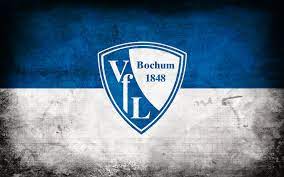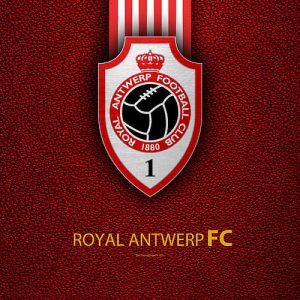The New Orleans Saints have a rich and multifaceted history that embodies the culture, spirit, and resilience of New Orleans itself. Founded in 1967, this NFL team has evolved over the decades from humble beginnings to a powerhouse of talent and determination, capturing the hearts of fans far beyond the Crescent City. The journey of the Saints is not just about football; it’s about the unwavering spirit of a city known for its music, food, and vibrant culture. Throughout this article, we will delve deep into the crucial moments that shaped the New Orleans Saints, their legendary players, unforgettable shbet games, and the profound impact they have had on both the sport and their community.
Early Beginnings and Struggles New Orleans Saints
The origins of the New Orleans Saints are rooted in a unique mix of perseverance and local pride. The team was established when the NFL awarded a franchise to New Orleans, marking the city’s entry into the national sports landscape.
The Founding of the Franchise
In 1966, the NFL granted an expansion franchise to New Orleans, a city rich in culture but lacking representation in professional football. The team was named “Saints” in honor of the day it was announced—November 1, which coincides with All Saints’ Day. This unique naming tradition reflects the quintessential characteristics of New Orleans, infusing the team with local heritage from its very inception.
It was also in these formative years that the team’s colors, black and gold, were chosen to represent not only its identity but also to symbolize the vibrancy of the Mardi Gras celebrations. As the city rallied behind its new franchise, the Saints attracted attention from local fans eager to support a professional football team representative of their identity and culture.
Early Challenges on the Field
Despite the enthusiasm surrounding the founding of the New Orleans Saints, the team faced significant challenges on the gridiron. The Saints struggled during their first season in the NFL, finishing with a dismal record. These initial growing pains reflected a common tale of expansion teams, as the players and coaching staff worked tirelessly to build cohesion and develop strategies for success.
Fans remained loyal despite the early struggles, wearing their newly donned jerseys with pride. The local radio airwaves buzzed with discussions of strategy, lineups, and game highlights—all signs of a burgeoning fandom that thrived even in tough times. The experiences of those early seasons would later become a narrative thread interwoven into the fabric of the team’s legacy.
The Search for Stability
One of the critical elements to the long-term success of the New Orleans Saints has been their enduring quest for stability within the organization. In the tumultuous late 1960s and 1970s, the team cycled through various head coaches and roster changes. Ernie Hefferle became the first head coach, but he was soon replaced by several others, illustrating the organization’s struggle to find the right leadership.
This era of instability cultivated a sense of longing among fans who yearned for sustained excellence. Year after year, they witnessed top-tier talent come and go, along with coaching changes that impeded progress. This continuous churn fueled the creation of passionate narratives among supporters, reinforcing a hope that true greatness could still lie ahead.
Building a Competitive Team New Orleans Saints
As the idealism of the early years faded, the New Orleans Saints began to shape themselves into a more competitive entity. The promise of success started to glimmer on the horizon, creating waves of excitement among the fanbase.
The Arrival of Key Players
In the 1970s and 1980s, the New Orleans Saints began to acquire key players that helped establish a robust foundation for future success. Under the guidance of influential coaches like John Mecom Jr., the team drafted talents such as Archie Manning, a quarterback whose dynamic playing style and charming persona made him one of the most beloved athletes in the city’s history.
Manning’s significance transcended his role on the field; he became the face of the franchise and acted as a beacon of hope during challenging seasons. His resilience in the face of adversity resonated deeply with fans, and he symbolized a shift where the Saints transitioned from perennial underdogs to a source of pride for the region.
The Emergence of a Defense
Throughout the latter portion of the 1980s, the defense underwent a tactical transformation. Young talents such as Rickey Jackson and Sam Mills brought speed and aggression to the linebacker corps, establishing a formidable presence on the field. Their tenacity set the tone for a defensive unit that often outperformed expectations, granting the Saints newfound respectability within the league.
This transfer occurred while the franchise began to gather momentum. While injuries plagued the offense, the profound work ethic exhibited by the defense forged bonds within the locker room. It also inspired a passionate response from fans, evoking reverberations of loyalty that drew communities together to support their hometown heroes.
The ‘Dome Patrol’ Era
The late 1980s ushered in the era famously dubbed the “Dome Patrol.” This term represented a ferocious defensive unit that stymied opposing offenses and captured the imagination of fans. The Dome Patrol comprised standout players such as Ricky Jackson, Sam Mills, Vaughan Johnson, and Pat Swilling. Their prowess on the field soon turned the Louisiana Superdome into a fortress feared by rivals.
Beyond the accolades, the Dome Patrol exemplified camaraderie—players shared mutual respect, bonded through grueling workouts and inspirational victories. Their captivating performances tailored an experience of community unity unrivaled in New Orleans at that time. The connection between the players and the supporters solidified as cheers erupted within the energetic confines of the Superdome whenever their names echoed through the arena New Orleans Saints.





